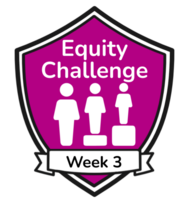- Reflect on what you know. Start with an acknowledgement that your own beliefs, biases and understandings of race, inequalities, class and identity are important. Your lived experiences, your level of privilege and how you interpret the current events may influence how you talk to your children about such topics. Before starting a conversation explaining racism to kids, take the time to educate yourself and reflect.
- Do your research. You’re not expected to be an expert, but take it upon yourself to get informed. These are topics that are difficult for a variety of reasons – understand this is a learning process, and we all have something to learn.
- Acknowledge what you don’t know. If you don’t know how to answer a question your child poses, that’s okay. Reassure your child that you’ll look into it, and see if you can learn together with your child. Encourage your child to continue to ask questions.
- Limit exposure to media and social media. Protests are occurring right now over racism across our nation. Protests have occurred throughout history to express feelings over conflict, violence, injustice, discrimination, inequality and more. To peacefully assemble is a protected right in the United States and is a way to stand together and make your voice heard.
It is important for your child to understand what is happening, but also understand that the images and stories portrayed on the news and social media can cause anxiety and fear in both children and adults. It’s encouraged to limit exposure based on what you feel is right for you and your family. - Listen and encourage your child. What are the questions your child is asking? What do they already know, and what are they concerned or worried about? Share age-appropriate and diverse books, stories and movies about different societies, cultures and ideas with your child and allow and encourage them to speak freely about social justice, injustice and other issues.
- Monitor your child’s emotions. Understand when your child may become overwhelmed and adjust as needed. Let them know that you’re going to keep talking about these issues and they should, too.
- Correct misinformation. Correct misperceptions and misinformation the world has about people who are of a different race. Help your child better understand that no one is less human than another, and we should treat everyone fairly, with respect and kindness.
- Talk about race in age-appropriate ways.
- For preschoolers: At this age, your child may begin to notice and point out differences in the people around you, like when you’re at the park. If your child asks about someone's skin tone, you might say, "Isn't it wonderful that we are all so different!" You can even hold your arm against theirs to show the differences in skin tones within your family.
- For elementary school children: This is the age that is important to have open talks with your child about race, diversity and racism. Discussing these topics will help your child see you as a trusted source of information on the topic, and he or she can come to you with any questions. Point out stereotypes and racial bias in media and books such as villains or "bad guys" in movies.
**These are based on my quiz results and what it said I need to improve.







